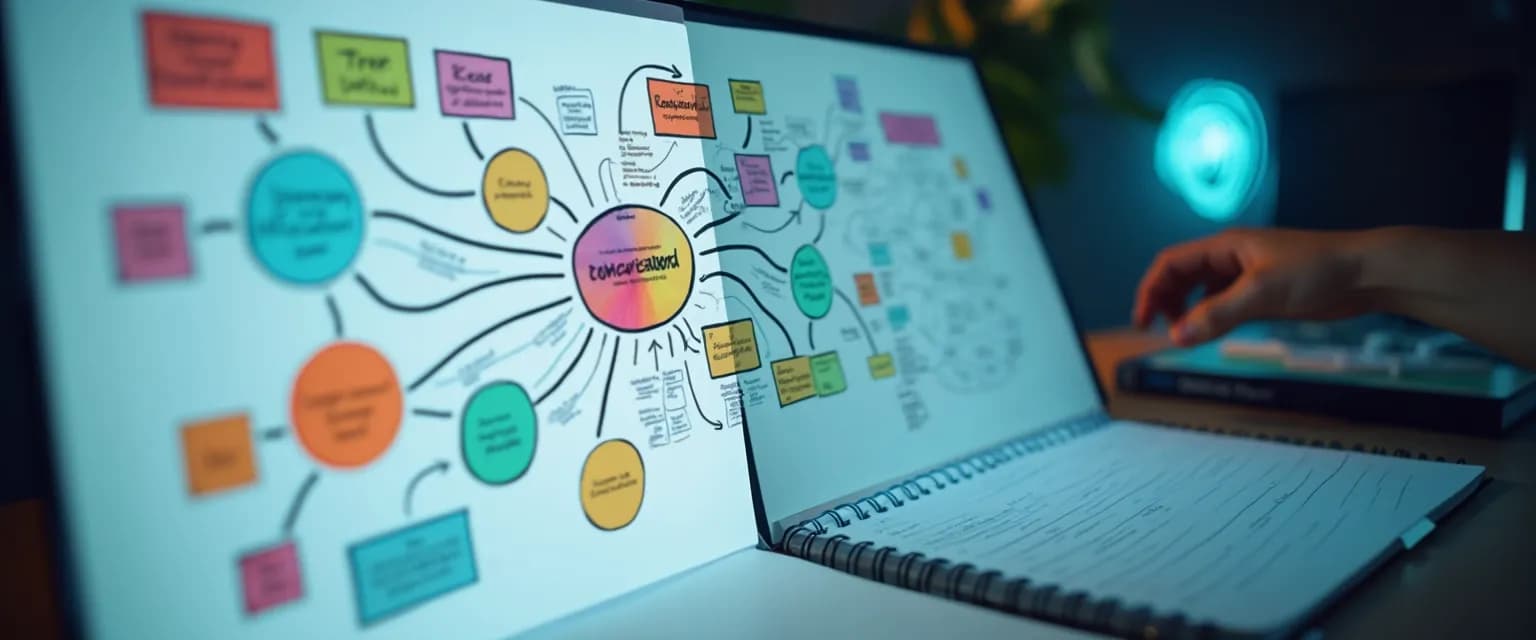Unleash Your Mind: Mind Mapping vs Traditional Note-Taking for Mental Clarity
Ever notice how your mind seems to work differently when you're scribbling linear notes versus creating a colorful mind map? The way we capture and organize information isn't just about personal preference—it actually creates distinct neural pathways in your brain. As we navigate information overload in our daily lives, finding the right technique to boost your mind's clarity becomes increasingly important. The battle between traditional note-taking and mind mapping represents two fundamentally different approaches to how your mind processes, stores, and retrieves information.
Research shows that your mind forms connections between ideas in complex networks, not strictly linear pathways. This explains why some people experience mental breakthroughs when switching from conventional notes to visual mapping techniques. The science behind visual thinking demonstrates that your mind processes images 60,000 times faster than text, potentially offering significant advantages for certain types of cognitive tasks and mental clarity techniques.
Understanding which method aligns best with your mind's natural tendencies isn't just academic—it can dramatically impact how effectively you learn, create, and solve problems in both professional and personal contexts.
How Mind Mapping Activates Your Mind Differently
Mind mapping leverages your mind's natural tendency to think in non-linear, associative patterns. Unlike traditional notes, mind maps use a radial structure with the main concept at the center and related ideas branching outward—mirroring how your mind naturally forms connections between concepts.
This visual approach activates both hemispheres of your brain: the logical left side processes the words and structure, while the creative right side engages with colors, images, and spatial relationships. This whole-brain engagement explains why many people find that mind mapping enhances how your mind retains and recalls information.
Visual Thinking Benefits
The visual nature of mind maps provides significant advantages for your mind's processing capabilities. Colors, symbols, and spatial relationships create multiple memory cues, giving your mind more "hooks" to hang information on. Studies show that visual techniques can improve memory retention by up to 10-15% compared to text-only methods.
Association Techniques
Mind mapping excels at showing relationships between ideas, which helps your mind make connections that might otherwise remain hidden. This makes it particularly effective for brainstorming, project planning, and complex problem-solving—situations where your mind needs to see the big picture and identify patterns across different information domains.
For example, a marketing professional might use mind mapping to visualize connections between audience segments, messaging strategies, and product features—relationships that might be difficult for your mind to track in linear notes.
Traditional Note-Taking: Linear Pathways in Your Mind
Traditional note-taking creates sequential, hierarchical pathways in your mind that mirror how information is typically presented in lectures, books, and meetings. This linear approach provides structure that helps your mind process information in a logical, step-by-step manner.
When dealing with complex, detail-heavy information, the organized nature of traditional notes gives your mind clear frameworks to follow. This explains why traditional methods often excel in academic environments where your mind needs to process and retain specific facts, definitions, and procedures.
Sequential Learning
Linear notes support your mind's ability to follow logical progressions and understand cause-and-effect relationships. They create a clear narrative flow that helps your mind process information chronologically—particularly valuable when learning processes with distinct stages or understanding emotional patterns.
Structured Thinking
The hierarchical nature of traditional notes (main points, sub-points, details) helps your mind categorize information efficiently. This structured approach supports analytical thinking and detailed information processing, making it ideal for situations where your mind needs to engage in deep analysis rather than creative association.
Transform Your Mind with the Right Technique for You
The best approach for your mind likely combines elements from both methods. Try this simple test: take notes on the same topic using both techniques, then attempt to recall and explain the information 24 hours later. Which method helped your mind retain and understand the information better?
Many people find that mind mapping works better for creative tasks and big-picture thinking, while traditional notes serve your mind better for sequential learning and detailed information. The key is recognizing when to apply each method based on your specific cognitive needs.
Digital tools now make it easier than ever to experiment with different approaches to find what works best for your mind. Apps that allow switching between mind map and outline views offer flexibility that adapts to how your mind works in different contexts.
Ultimately, mastering both techniques gives your mind more options for processing information effectively, leading to greater mental clarity and cognitive performance across all areas of life.




